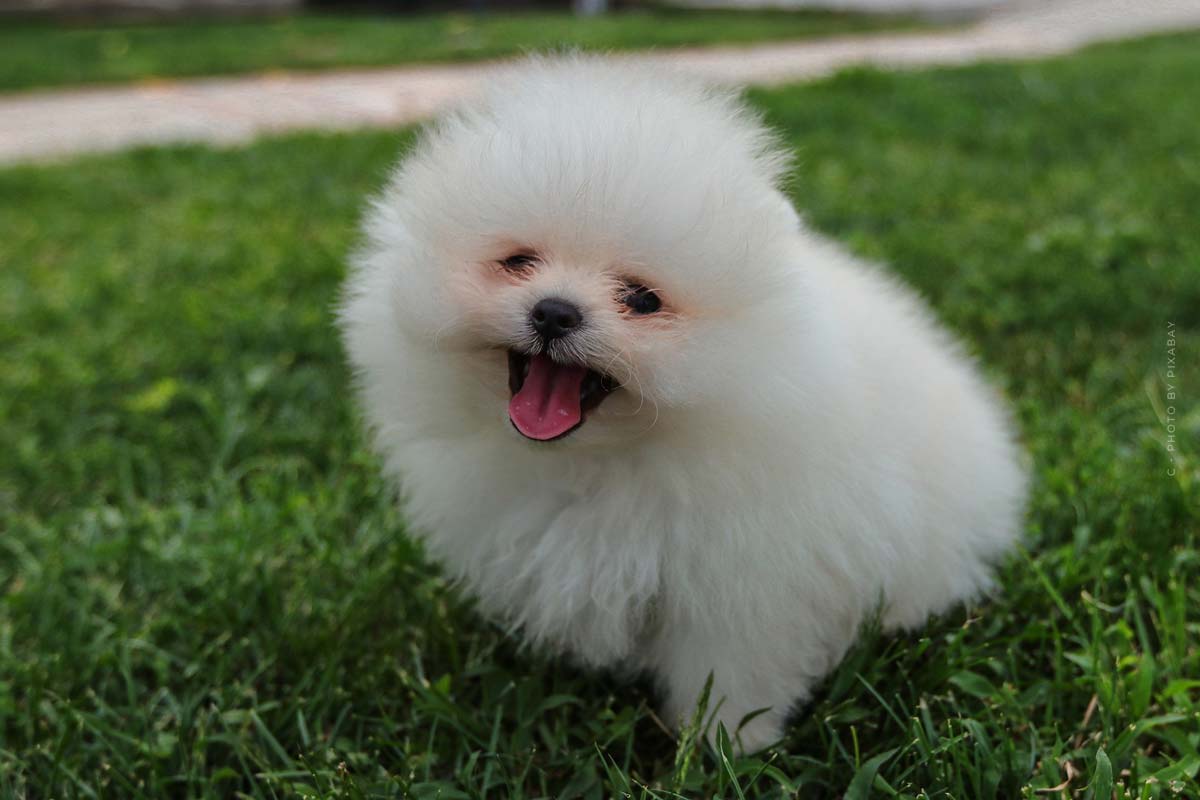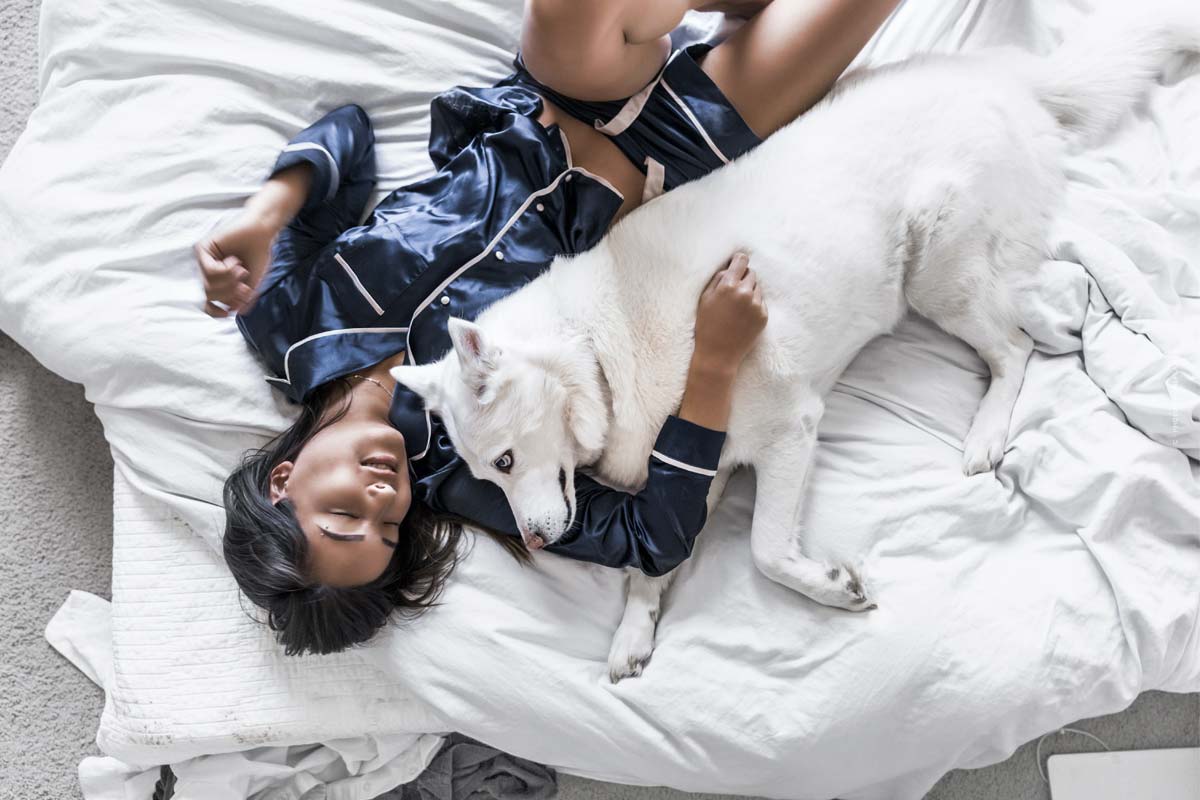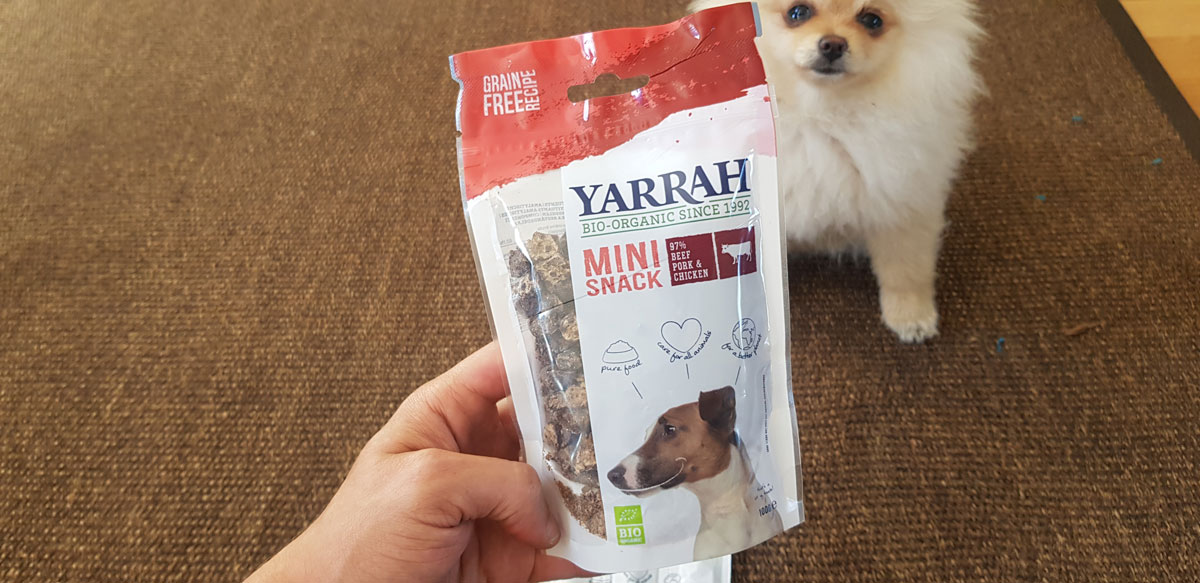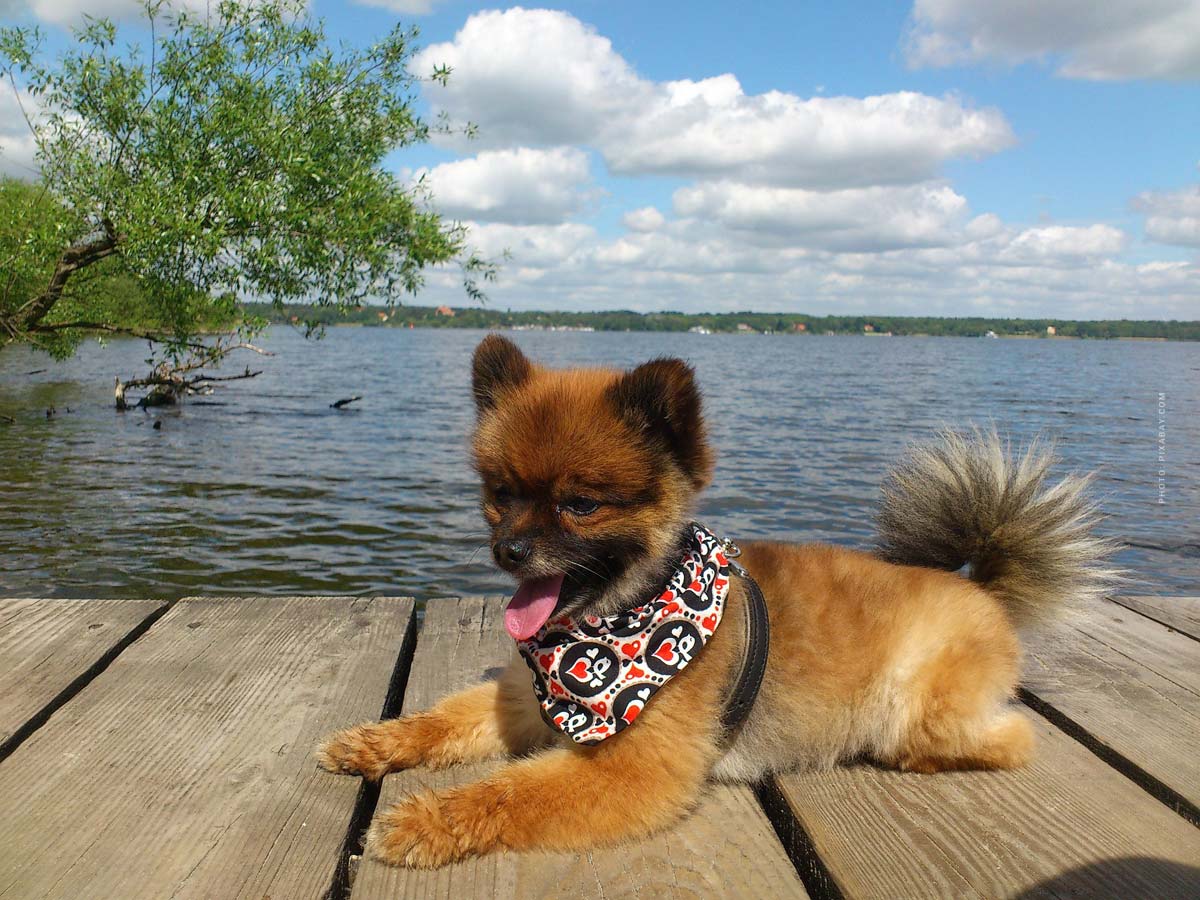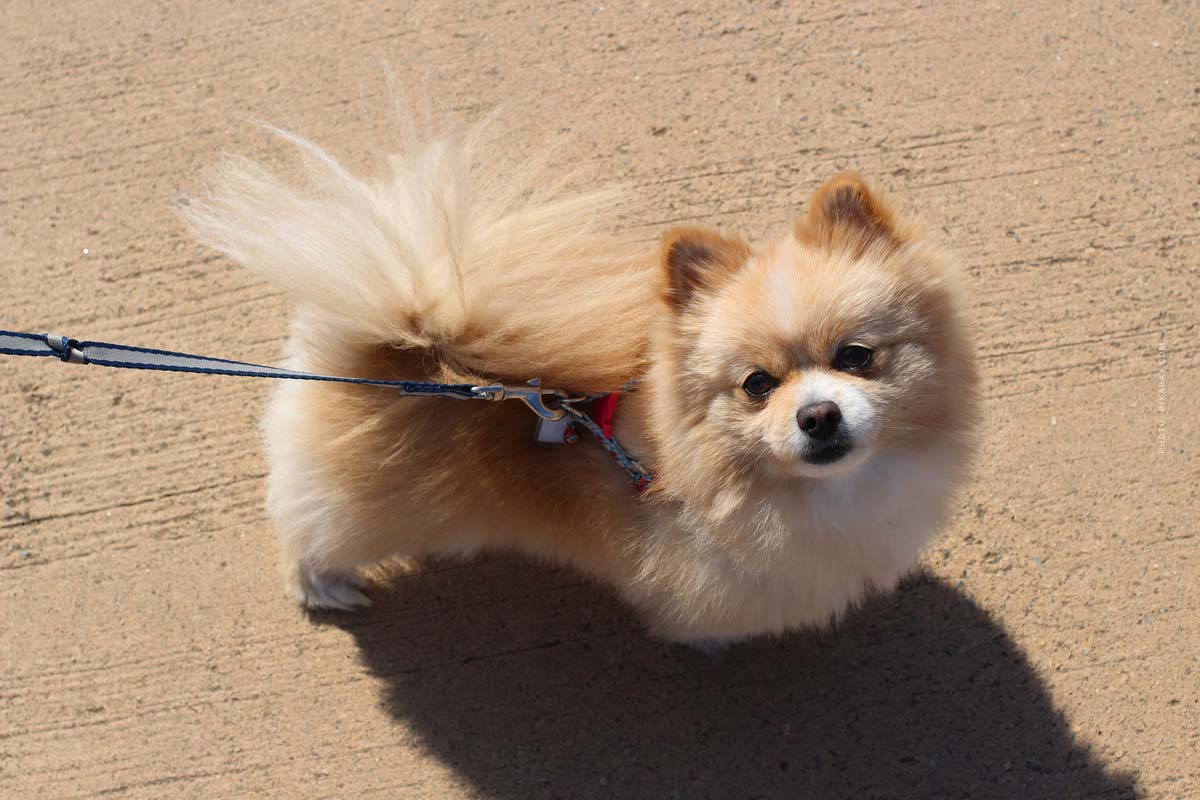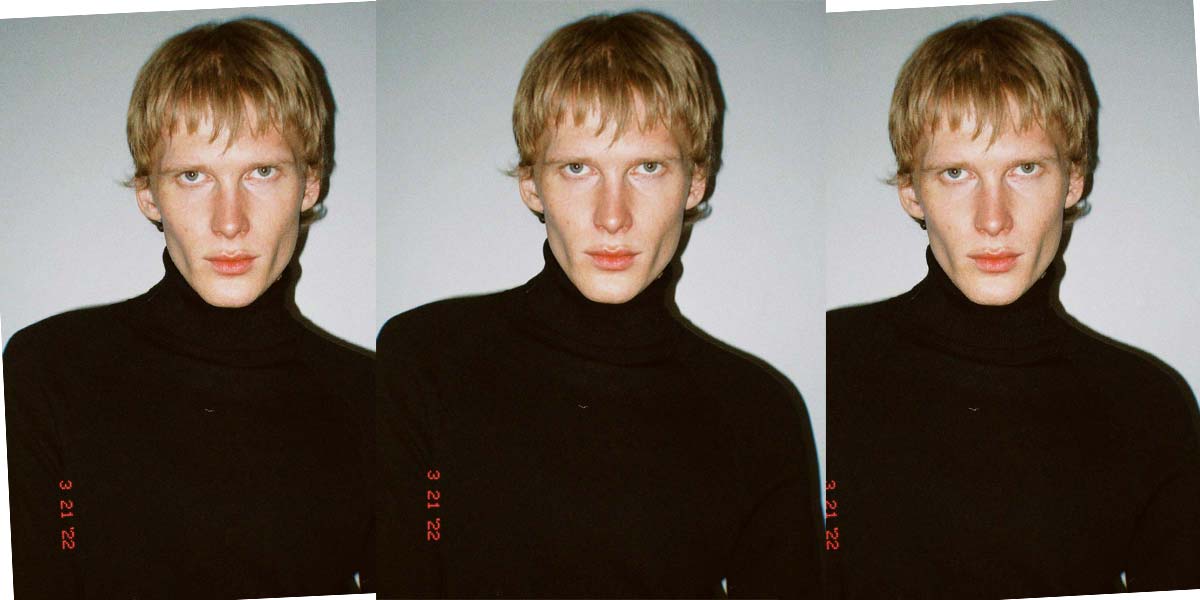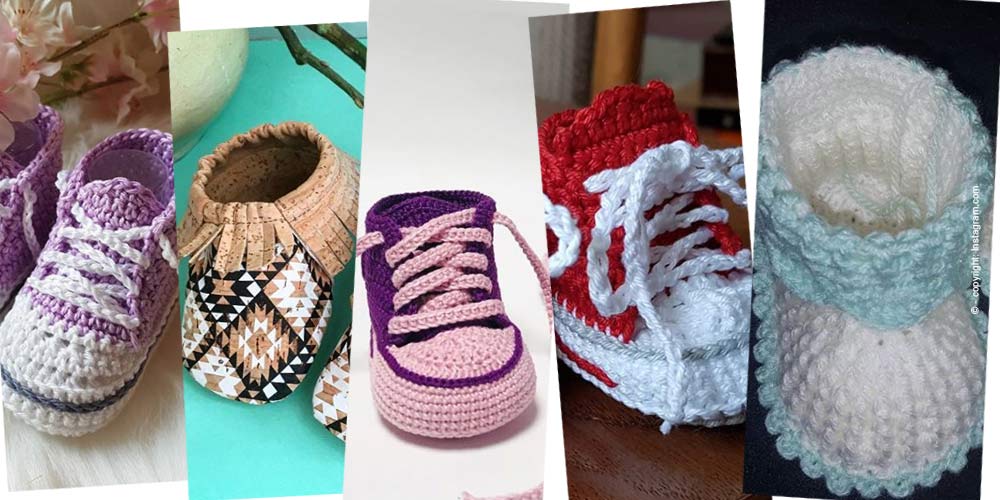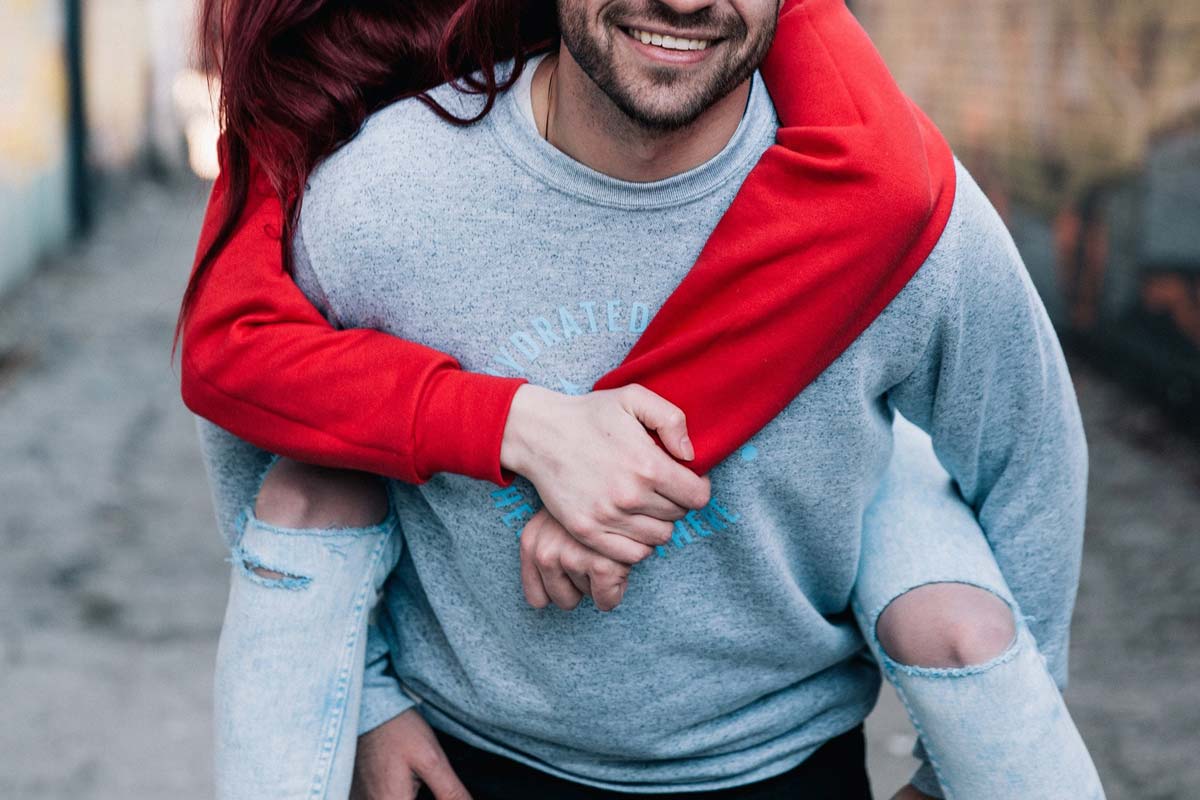First Dog. Experience: Housebroken, walking without leash, learning commands
The first year with my little dwarf spitz, she is called Peppa. I have told you about the first days in detail, in the article my first dog. Hard to believe, but true, Pomeranians remain just as cute as they were when they were puppies. Want to prepare for the first few months with your dog? Then learn what to do after the first few weeks here! My experiences and tips on walking, housetraining, food times, low barking, off-leash walking, giving commands – part 2 of the guide for little Pomeranians.
1 year with Peppa (Pomeranian): My experiences
Let’s start with the basics first:
- You’ll get used to each other, get used to each other, become a team…
- Always remain patient and calm – dogs become like their owners, be a role model
Listen along with Zoe:
First of all, your dog is affectionate as a little puppy and even later. My dwarf puppy looks at me virtually every minute, with a questioning look, what are we doing? But, it’s getting a little less.
You and your dog are always more confident together!
In the beginning she ran into my legs so often, sometimes I kicked her away slightly by mistake, that’s quite “normal” in the beginning. You have to get used to each other first! The important thing is:
Always stay patient with your dog!
Above all, it is important to go out regularly so that your dog becomes house-trained, to feed him regularly and to always have fresh water at the bowl and on the way (for more than 1 hour).
In this article, you’ll learn what to expect after the first few weeks!
Let’s start simple, with the most important, feed 2x a day.
Tip. Part 1: The first weeks with a Miniature Spitz
From a small puppy to a full-grown dwarf Spitz. Already in part 1 I took you into the (for me) new world of dogs. In part 1 it was mainly about the first days and weeks, the basic equipment for puppies and much more. Read here everything about our first weeks together:
So small and cute, “Peppa” was as a puppy – Before.
So small and cute, she still is – After.
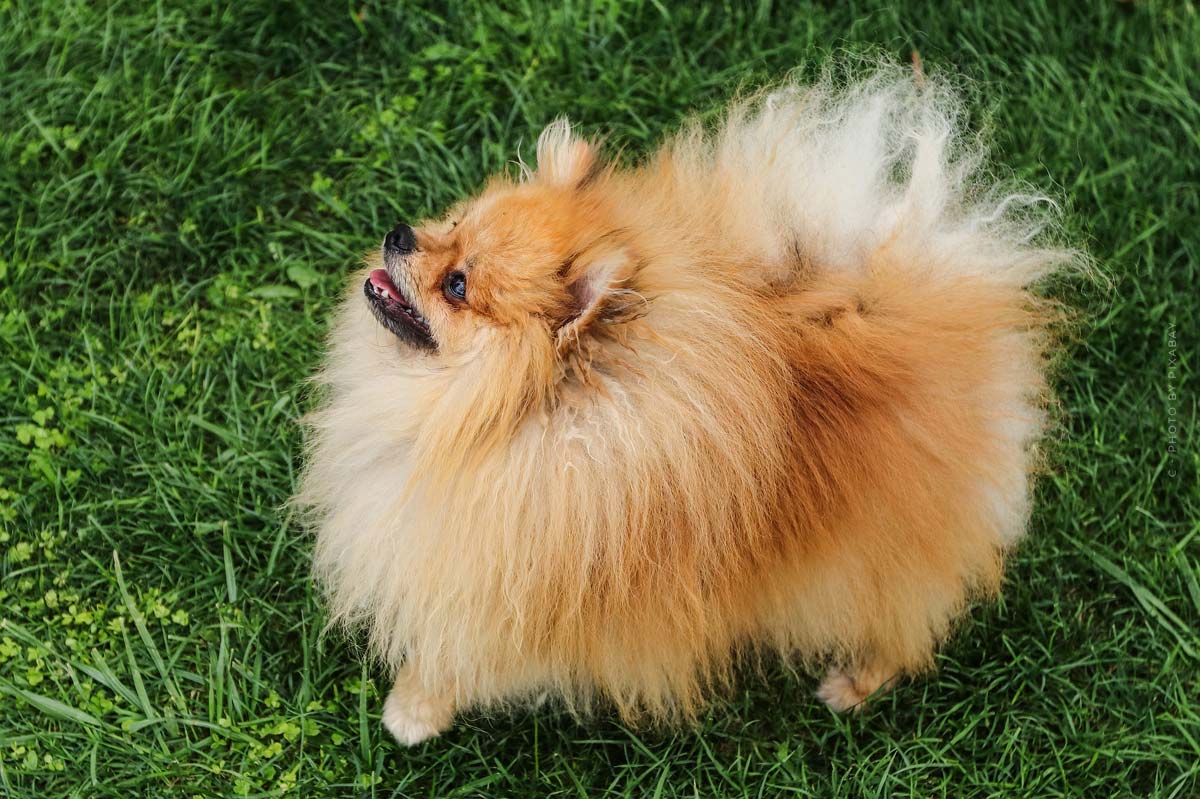
That’s how fast a Pomeranian grows up, or rather becomes full grown.
Dog food: Delicious, healthy and… how often?
The big, or rather small advantage of the Miniature Spitz, you need relatively little food! I always have a little dry food, wet food and of course a few (few) snacks. If you know the classic Caesar can, then it lasts about three days, with some additional dry food.
My little dog is fed twice a day, in the beginning I fed her three times a day, that was too much!
So she doesn’t do much in the evenings (topic: housetraining) I feed her 1) in the morning and 2) at noon/afternoon.
Zum! This here even more on the subject
- Dry and wet food
- 1) morning and 2) noon/afternoon
- Few snacks (if, 90% to chew)
- Important: Always provide water
Tip. Buy snacks to chew
Dogs love to chew, it’s fun for them and a distraction at the same time. That’s why I like to buy chew sticks or snacks that keep her a little busy.
- Snacks to chew
- Occupation and fun
How much does an adult dwarf spitz weigh?
Depending on whether your Pomeranian is purebred or not, the weight will differ. My little one is purebred and only weighs 2.2 kilos when full grown. So she is actually more fur than dog!
- Approximately 2.2 kilogram
- Purebred
Dry food, water, the basics.

Always good: something to chew on!
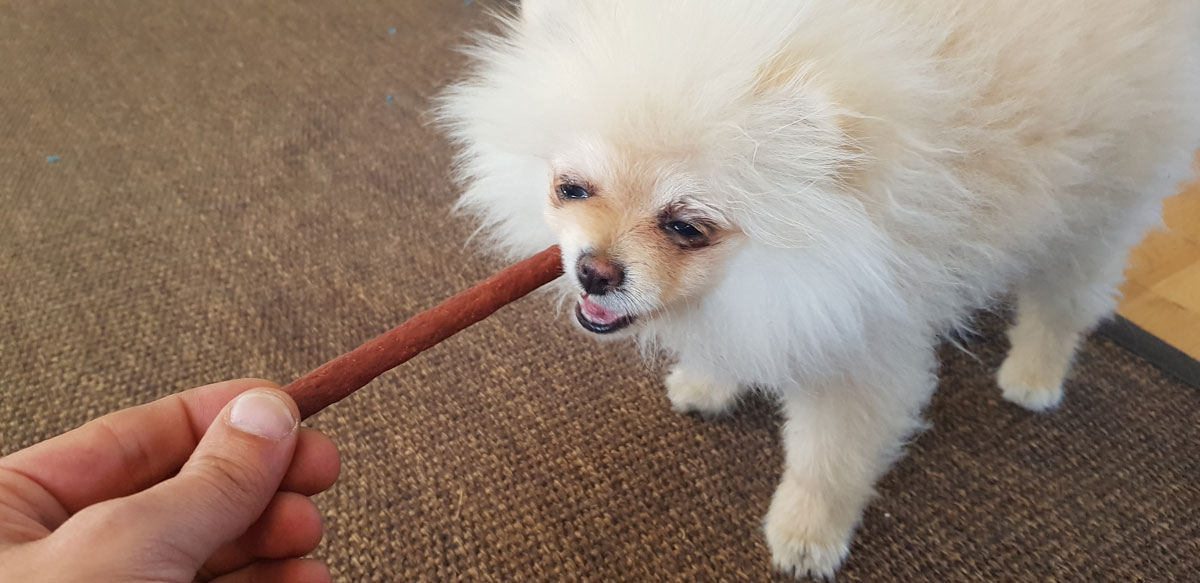
This also brings us directly to an important question, for new dog owners:
Travelling with a dog: train and plane
What about when you travel? Can your dog come with you and if so, with whom?
Can I take a Miniature Pomeranian with me on the plane?
Yes and no, sometimes you can take very small dogs on planes. But you should check beforehand if the airline allows it or not. For example, some airlines only allow assistance dogs (e.g. guide dogs).
Airline examples:
- Ryanair – no dogs allowed (only companion dogs)
- Euro Wings – Dogs allowed
Can I take a Miniature Pomeranian with me on the ICE / train?
Yes, dogs are allowed on trains, but also on long-distance trains (ICE). Theoretically, it means that you need a dog box. But so far no one has approached me. Whereas I have bought a box. However, the pullover on the seat or on the floor is often the easier alternative.
The dog is so small that really no escort has said anything yet.
- Yes, dogs are allowed on the train
Not Peppa, but cute too! With dog on the beach:

Housebroken: How long does it take?
You are a dog is really housebroken, you need to bring a lot of patience. About 6, 7 to 9 months until he or she really understands that you do not do in the apartment. Especially not on the carpet! If your carpet does get a fair amount, you’re going to need a carpet cleaning. Because it smells! Tips on that in a moment.
#reallife
That’s why it’s so important not to just buy dogs or give them away. You really have to think about it, they need a lot of time, love and attention. What that means, you learn again here Dog as a pet: Requirements.
Going outside regularly: teaching “doing outside
Often your dog needs to feed especially after meals. Therefore, it is important to feed at noon / afternoon. Then in the evening, only minimal (eg 1 snack). This way your dog does not have to go to the toilet at night and you have less dirt in the apartment.
My tips:
- Duration: 6 to 9 months
- Important: Get out 3x a day, regularly
- Times: Morning, noon/afternoon and night.
Puppy Pads: Tip for your home and carpets
Tips for flats! Buy Puppy Pads So to speak flat diapers for the floor. Kind of like paper, about 50 by 50 inches, you just lay it on the floor. The paper is absorbent.
- Diaper for the floor
- Ca 50 x 50 cm
- Absorbent
How much does carpet cleaning cost?
My whole apartment has carpets – inconvenient! Accordingly, the first few months have left their mark on the floor. Maybe you’ll find yourself in the same situation! So here are my tips to help you find a good carpet cleaning company. Because, a bit like locksmiths, what does a good, reputable carpet cleaning cost and how do you find a good company?
First: Avoid clicking on the first places in the search results. On the first places you will find 99% ads. These results are minimally marked by “ad”. Because, someone has to pay for these ads, you!
Get at least four comparative offers, so you can get the best price. Of course, the price is not everything, the quality is also important, after all, it’s your own home. For that, be sure to check out Google reviews. Compare the amount of reviews and the amount of the average rating.
If you live in the big city, question not only the few shops in the city center, question also in the suburbs or slightly outside. Here the rents are cheaper, the wages, accordingly, the costs for you are somewhat lower.
Here again all savings tips summarized:
- Do not click on ads on Google (first results)
- Price comparison: Obtain at least 4 comparative offers
- Experiences: Compare Google reviews (amount and average)
- Suburban companies, smaller towns
- Make a fixed price in advance
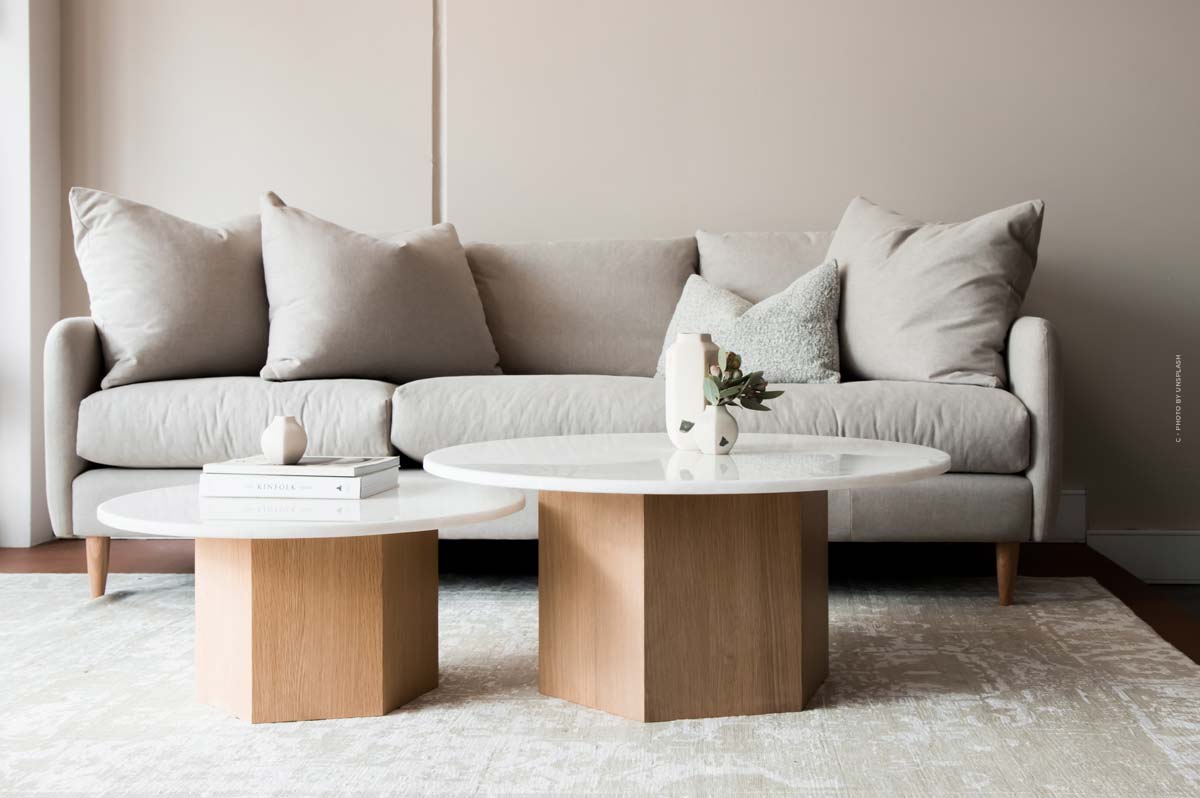
Walk him: How often do you have to go out?
Let’s get to walking and (importantly for me) off-leash walking.
How far does a little pygmy run?
In fact, you can’t do long, extended jogging runs with a Miniature Spitz. Usually 2, maximum 3 km are enough, then your little doggie is already pretty knocked out! I myself usually just run a little in the neighbourhood, maybe 400, 500 metres to the nearest café and back.
The easiest way to tell that your dog is exhausted is that he really doesn’t want to run anymore and lies down on the floor. From my experience you should not sneak your dog after you, if necessary carry her a few meters, until home or give him enough time, perhaps a snack and some water to recover.
Important: Don’t tug your little puppy just because he or she doesn’t want to. When they have energy, they run all by themselves.
To recap, walk:
- I run an average of 400, 500 meters
- 2-3 km distance is enough
- If your dog consistently lies down, wear him or her
So often overlooked: Small dogs
Here is a little tip, if you have your first dog! Especially in the first weeks and months, it can happen that your dog runs into your feet, you accidentally step on your dog, of course only slightly, e.g. when getting up from a chair, while you are careless.
Don’t worry, you’re getting more careful and sensitive.
At some point, you’ll automatically look at the floor before you get up from the chair. Just a little example! It’s the same with your dog, you both get to know each other better and better. Little by little you notice that you can walk further and further distances and that your dog follows you better and better.
Especially in the big city a real issue! For example, I always have a cappuccino with me, mobile phone in hand…. in the first weeks you are sometimes a little annoyed, that’s quite normal! Suddenly your dog jumps into the street, a leaf is chased after (cappuccino spilled), or even the hunt, for the next pigeon.
After 4, 5 months, you already know automatically what your dog reacts to. After 9 or 10 months at the latest, you’ll be really well attuned to each other!
Running without a leash: How to learn?
Running off leash is such an issue, especially in the big city! If you want to walk off-leash with your Miniature Spitz, be aware, even if your dog is super cute, it is and always will be a dog! Accordingly, you can trust him and her, with a little training and practice.
How does my dog learn to walk without a leash?
We started our training in the park, here we have a lot of space, green meadow and if necessary I can run behind!
Learning to walk without a leash: This is how it works
Just always make sure you keep your dog in sight and teach him or her to come towards you when you interact with her. E.g. by a whistle or a certain command, I always say “Peppa (her name), come”.
Also, always make sure you are the alpha dog:
Your dog follows you, not you the dog – stay consistent
Sometimes you just have to run 20, 30 meters ahead, your dog will follow you almost automatically. If not, immediately give “command” and make sure that “something happens”. Either your dog comes or you go, take her with you (on a collar, leash or by talking to her). The important thing is: your dog follows.
The more often he or she does this, the greater the learning success and automaticity.
Repetition and attention for learning success
Running without a leash is like us: when we learn the guitar, a new language or a new sport. The more training, the more proficient we are! So if you run off-leash regularly, even for a few stretches, your dog will get used to it. Accordingly, your teamwork will become more and more harmonious.
Maybe as a tip, I never work with treats. Dogs are pack animals and accordingly you should be a strong and good “role model”. Then everything works, even without treats.
But treats can help with training, e.g. for sit, down and so on. But I’ll show you in a moment how your dog learns commands like “fetch” and “search” quickly, even without a single treat.
This is the fastest way for your dog to learn to walk off leash:
- Search for open space, ideally in park or similar (few dangers)
- Walk slowly in front, looking mostly in the direction of the target
- Moving forward consistently
- Stay alert when dog calls 2, 3 meters away
- Unify calls: I whistle (softly) and have the command “Peppa come”
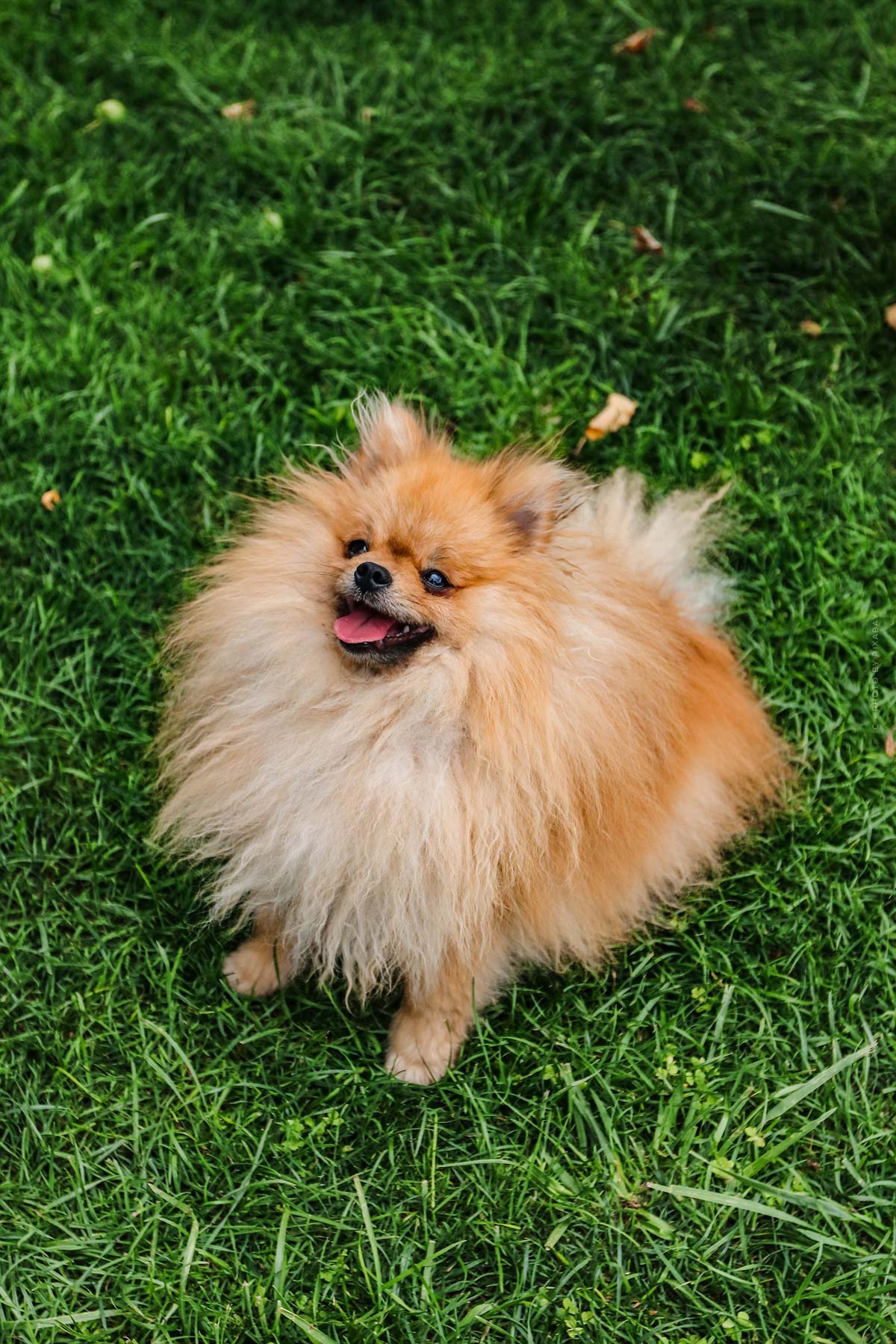
Toys: What does a Miniature Spitz need?
Just like with snacks, I keep it the same with toys, less is more! In fact, my dog has only 2, 3 (of 6) toys that she likes to play with. My little tip, it’s best to go directly to the pet store and see what your dog reacts to. So you can directly find a good toy that your dwarf dog will enjoy.
It is much more important that you spend time with your dog! Go out into the countryside, onto the meadow, if possible into the park and into the forest. That’s what your dog enjoys the most!
- Maximum 5 toys
- Rather: spend time with the dog, go to the countryside
Playing with leaves, with sticks, with other dogs, all better than another “plastic piece” in the apartment.
Learn commands: Fetch, Bring, Search, Sit!
A good start, are always simple things. PS: Super handy is “Search”, that saves you time too!
One of the first commands Peppa learned was “fetch” and “bring.”
“Learn “Get” and “Bring
1 command would be enough, I just always call both. Typical example: fetching sticks. Works great in the city apartment too though. Just work with the favorite toy. Communication is the key. Always think simple and with enough repetition. If you want to teach your dog these commands.
“Learn to “fetch” and “bring”, checklist in 5 steps:
-
- Take a toy that your dog knows (term) and likes
- Just throw the toy away, e.g. in the apartment, 4, 5 meters in the hallway
- Say “fetch” or “bring” with several repetitions.
- Look at the toy again and again at the same time
…
- After 5-10 seconds you run to the toy
Repeat this a few times. Your dog will eventually understand what to do.
So, if you repeat this exercise a few times, eventually a dog will run, get his toy and bring it back to you. After that, as a reward, just clap your hands (for example) and praise your dog by name.
Learn “Search”
It’s the same with “search”, it worked for me right after the third time. Her favorite toy is a bone. Accordingly, I simply said “Find the bone”, “Find the bone”!
Tip. “Search” is mega handy + also saves you time
Super handy because now I can also just say “find the bone” if I don’t know where it is, she’ll take me there!
“Learn to search” checklist in 4 steps:
-
- Take a toy that your dog knows (term) and likes
- Tell your dog, “Find the bone” (or what he, she knows).
- Repeat the command several times
…
- Again after 5-10 seconds, you run and go to the toy
For me it worked directly the third time! I even thought she wanted to feed, because she ran into the kitchen, but the bone was on the table! Therefore, super practical.
This is followed, as always, by a nice gesture, e.g. just clap your hands and praise your dog. As almost always, I work without snacks.
Much better than eating a lot, just to the all-natural play instinct!
Learn “Place”
A small, dear bribe, in the form of a treat, but there was when learning “place”. As always, it is important to stand quietly in front of your dog or kneel down and repeat the command several times. You can also gently help and push the butt down a bit so your dog understands what you want him to do. Through the snack he or she learns very quickly that it is worthwhile to perform this action.
“Learn to “sit” (with treats), checklist in 3 steps:
- Prepare snack, take in hand
- Saying place several times (repetition is always important)
- The first time slightly help, Po Samst press down
- Stay consistent, only with place there are treats
Tip. Also make sure that your dog remains seated while he or she gets the treat. This way your dog learns to be calm and not to jump frantically back and forth as soon as food is available.
Dog groomer: fur, fur, fur!
For fur care & Co., I have for you once again extra guide, with tips from the pros, my dog groomer. Tip! I never cut the fur of my Pomeranian super short. It looks cute, but fur is there for a reason and we shouldn’t think of it as a “hairstyle”. That’s why we pretty much only have “tip trims”. Read more here:
Part 1: The first weeks with Zwergspitz
From a small puppy to a full-grown dwarf Spitz. Already in part 1 I took you into the (for me) new world of dogs. In part 1 it was mainly about the first days and weeks, the basic equipment for puppies and much more. Read here everything about our first weeks together:

